Table of contents
-
Introduction
-
Positive impacts of social media on students
-
Negative impacts of social media on students
-
Academic Impacts of social media on Students
-
Social impacts of social media on students
-
Strategies for managing the impact of social media on students
-
How can SETU help?
-
conclusion
Introduction
Impact of Social Media on Students, shaping various aspects of their lives. It evolved into one of the world’s top channels for knowledge transfer. Younger generations typically utilize social media more than any other demographic.
Students frequently use social media to interact with old and new colleagues. However, social media has advantages and disadvantages, like any other technical breakthrough. Social media is one type of technology that schools are gradually incorporating into the classroom for instructional purposes. This new movement has received a lot of encouragement, however, it has additionally caused anxiety and worry.
This blog post will uncover Impact of Social Media on Students and explore its pros and cons.
Positive Impacts of social media on Students:
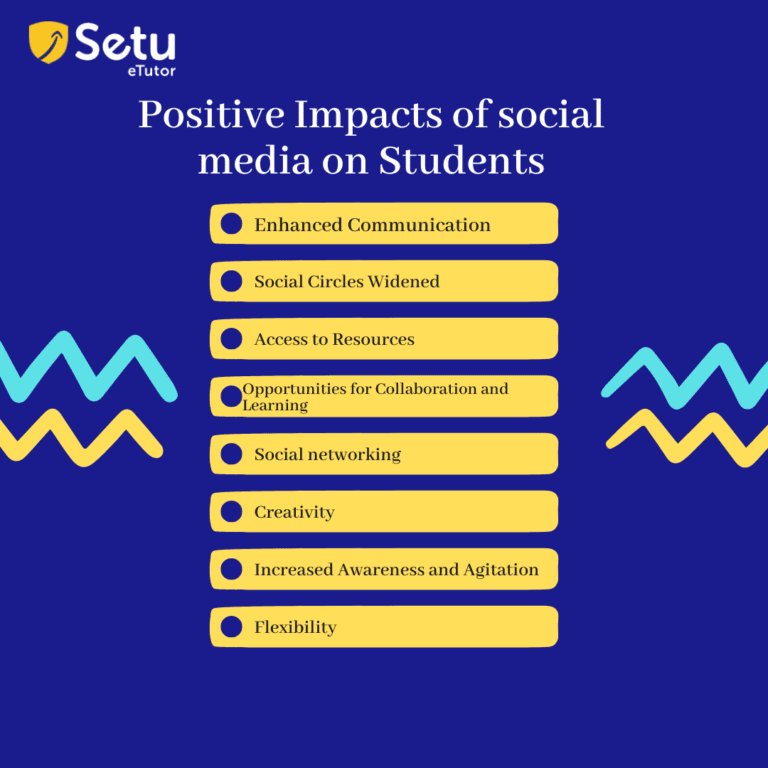
The positive impact of social media on students is numerous. Several of the main benefits are:
Enhanced Communication: Social media platforms allow Students to communicate and keep in touch with friends, classmates, and family. Through communicating, leaving comments, and sharing information, they may readily exchange views, ideas, and experiences.
Social Circles Widened: Through social media, students can connect with people from all origins and cultures, expanding their social circles. They can engage in global peer interactions that promote cross-cultural understanding and broaden their viewpoint.
Access to Resources: Students can use social media to gain access to a multitude of knowledge and learning materials. Many businesses, academic institutions, and professionals distribute useful articles, videos, lessons, and other materials on websites like YouTube, Twitter, and educational blogs.
Opportunities for Collaboration and Learning: Social media platforms allow students to collaborate on projects, exchange knowledge, and learn from one another. Online communities and organizations centered around particular academic areas or interests facilitate peer-to-peer learning and knowledge exchange.
Social networking: Social networking can assist students with personal and professional development. They may build professional profiles, communicate with other industry professionals, and look for new job prospects thanks to websites like LinkedIn. They can network with people who share their interests and demonstrate their abilities to prospective employers.
Creativity: Social media allows kids to express creativity and highlight their talents. They can share their writing, music, photography, and other creative works while getting criticism and support from their peers and a larger audience.
Increased Awareness and Agitation: Students can use social media to participate in debates, spread activism, and increase awareness of social concerns. They can support causes, encourage constructive change, and magnify voices that might not otherwise be heard.
Flexibility: Students can engage with others and access educational content on social media at their own speed and leisure. They can participate in debates and educational activities outside the typical classroom setting.
Negative Impacts of social media on Students:


Social media does have benefits, but it also has drawbacks for students. The following are some significant drawbacks:
Distraction and reduced productivity: Excessive social media usage can cause distractions and lower productivity levels. When lured by notifications, browsing, or endless scrolling, students may find focusing on their studies and assignments challenging.
Cyberbullying and Online Harassment: Impact of Social Media on Students can serve as fertile ground for these offenses. Bullying, troll behavior, and rumor-mongering among students can cause emotional discomfort, low self-esteem, and mental health problems.
Privacy and Security Risks: Students may be exposed to identity theft, privacy violations, or online predators if they share personal information online or interact with others there. They risk endangering their safety if they are careless and don’t understand privacy settings.
Sleep disturbances: Social media addiction among students is a worry, as it can result in excessive screen time, irregular sleep cycles, and poor general well-being. Their physical and emotional health may be impacted by their ongoing desire to be connected and their dread of missing out.
Mental health issues: Frequent exposure to curated information on social media and the pressure to obtain approval from others by getting likes and follows can exacerbate anxiety, despair, and loneliness. These mental health problems might be made worse by comparison to the seemingly ideal lives of others.
Academic Consequences: Extensive social media use might result in procrastination, less studying time, and poorer academic achievement. Finding a healthy balance between social media use and academic objectives may be difficult for students.
5 Academic Impacts of Social Media on Students:
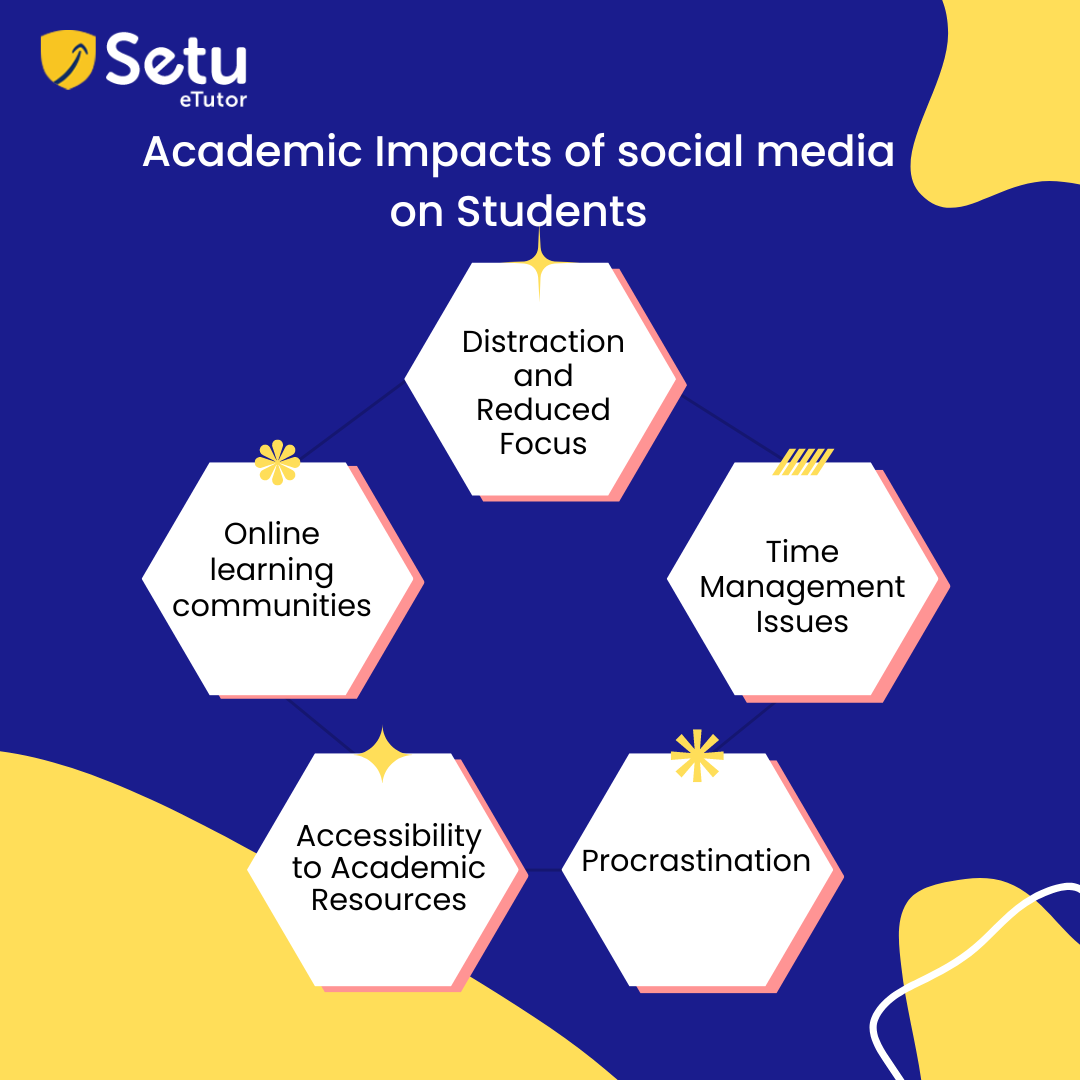
The following are a few of the major negative academic effects of social media on students:
Distraction and Reduced Focus: One of social media’s biggest drawbacks for academics is its propensity for distraction. Their capacity to take in and retain information may be hampered due to their diminished focus and productivity.
Time Management Issues: Students who use social media excessively may struggle to manage their time well. They might spend a lot of time viewing videos, participating in online debates, or browsing social media feeds, leaving less time for studying, doing assignments, or doing other academic activities.
Procrastination: Students’ procrastination tendencies may be influenced by social media. Students may put off or ignore their academic duties due to the rapid satisfaction and amusement offered by social media platforms, which results in last-minute scrambles to finish papers or prepare for tests.
Accessibility to Academic Resources: To exchange educational resources, announcements, and updates, many educational institutions, teachers, and organizations use social media platforms. These tools, including lecture recordings, study guides, and academic activities, can help students learn outside the classroom. Etutor is one such platform that incorporates collaborative learning in the study environment.
Online learning communities: Students can interact with classmates with similar academic interests or participate in specialized educational groups using social media platforms as platforms for online learning communities. It enables individuals to learn more, ask questions, and participate in debates outside the conventional classroom context.
Social Impacts of social media on Students:
The social impacts of social media on students are:
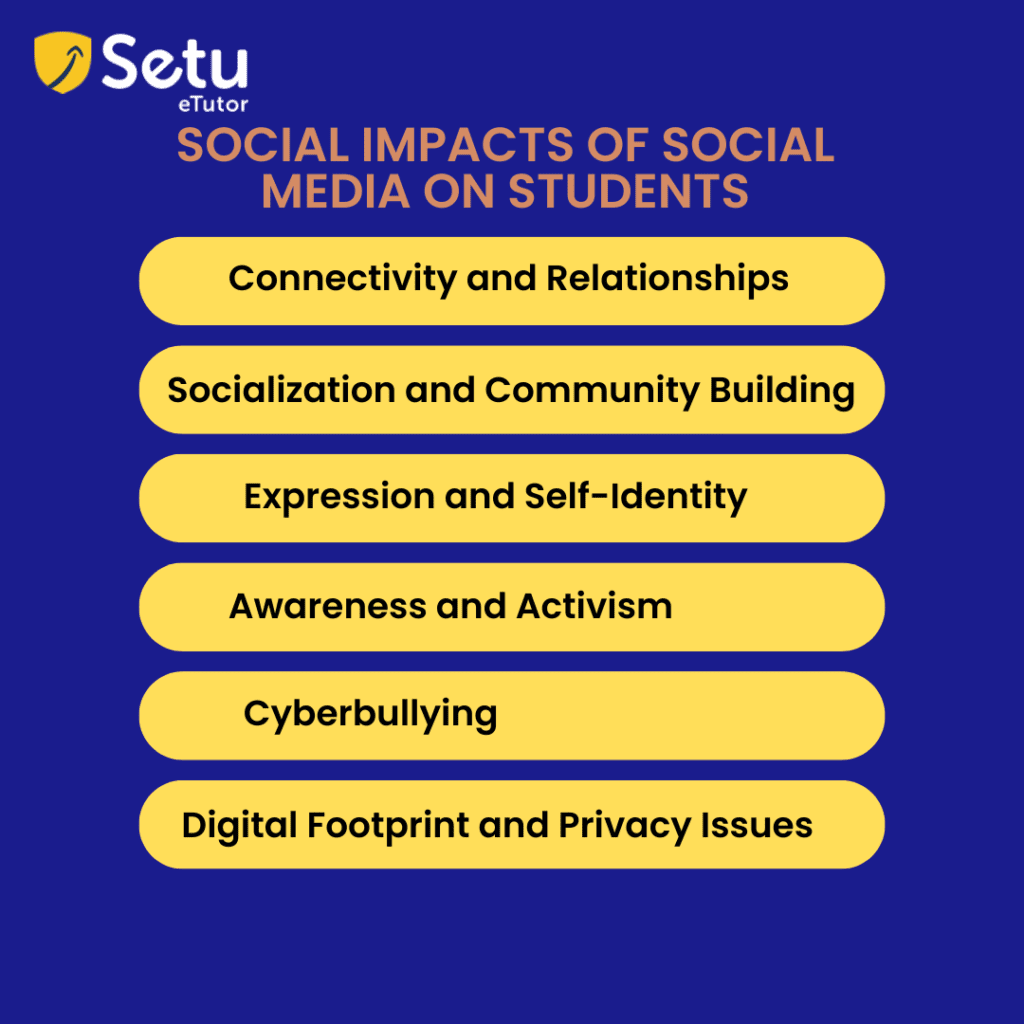
Connectivity and Relationships: Despite geographical differences, social media enables quick contact and keeps students in touch.
Socialization and Community Building: Impact of Social Media on Students to interact with one another and form online communities. It encourages community and makes interacting with people who share your interests easier.
Expression and Self-Identity: Students can express themselves and create online personas on social media platforms. They can express their ideas, beliefs, originality, and life stories.
Awareness and Activism: Impact of Social Media on Students involvement and increase public awareness of social concerns.
Cyberbullying: Unfortunately, social media platforms can be fertile ground for cyberbullying and online abuse. Negative encounters, trolling, or spreading rumors among students are all possible.
Digital Footprint and Privacy Issues: Students have privacy issues with social media. Sharing private data, images, and experiences could threaten security and privacy.
Strategies for managing the impact of social media on students
Combining strategies to encourage responsible usage, nurture digital well-being, and maintain a healthy balance between online and offline activities are necessary to manage the effects of social media on pupils.

Here are some practical methods for controlling how social media affects students:
Teach students about digital literacy: Teach students about digital literacy, including critical thinking, assessing online sources, understanding privacy controls, and identifying online threats. Teach children to check the legitimacy of the information they find on social media.
Encourage Open Communication: Establish a free-flowing, judgment-free atmosphere where students can openly discuss their experiences with social media.
Promote Digital Well-being: Encourage digital wellness to emphasize to children the value of preserving their mental and emotional health when using social media.
Collaboration: Work with educators and parents to promote safe social media use at home. Keep lines of communication open with parents to ensure they are aware of the potential effects.
Promote Responsible Usage: By establishing rules and expectations, you may persuade students to use social media responsibly. Teach kids about proper internet conduct, consideration for other people’s perspectives, and information sharing responsibly.
Establish Healthy Digital Habits: Encourage students to take regular breaks from social media and screen time to help them develop healthy digital habits. Encourage them to participate in offline pursuits, including hobbies, exercise, reading, and time spent with loved ones.
Set boundaries: Encourage pupils to limit their use of social media by telling them to do so. Limiting the amount of time spent on social media, setting aside specified times to use it, or turning off notifications while studying or sleeping are some examples of how to do this.
How can SETU help?

By building a welcoming online community, supporting digital well-being, and offering educational tools, Setu can help lessen the negative effects of social media on students. SETU helps in the following ways.
Education and Awareness: Setu can offer instructional materials and advice on how to use social media responsibly. It can provide information on subjects like digital literacy, online safety, privacy controls, and the effects of social media on mental health through articles, videos, or interactive modules. Setu can enable students to make informed decisions and use social media responsibly by raising their level of awareness.
Supportive online community: Setu can establish a welcoming online community where students can interact, exchange stories, and get guidance. Discussion boards, chat tools, or online support groups can encourage peer-to-peer relationships. It can give students a secure place to talk about problems, ask for advice, and get peer support.
Collaboration with Schools and Educators: To incorporate digital well-being initiatives into the curriculum, Setu can work with schools and educators. It can give parents and instructors information and instruction on fostering responsible social media usage. Together, Setu can support students in effectively controlling the effects of social media and reinforcing consistent messaging.
Tracking and Insights: Setu can offer tracking and insights features that allow students to understand their social media habits better. It can provide analytics on their usage patterns, screen time, and the types of content they engage with the most. These insights can help students reflect on their behaviors and adjust as needed.
Gamification: By adding challenges or prizes for good behavior, Setu may make responsible social media usage more fun. This gamification strategy can encourage beneficial online habits and reinforce healthy online behaviors.
Conclusion:
Students should prioritize their well-being, use social media appropriately, and balance online and offline activities. Students can be equipped with the knowledge to properly navigate social media and make decisions by receiving instruction in digital literacy, online safety, critical thinking, and managing online relationships.
Schools, parents, and educators all have a crucial role in guiding students and encouraging legitimate social media usage.

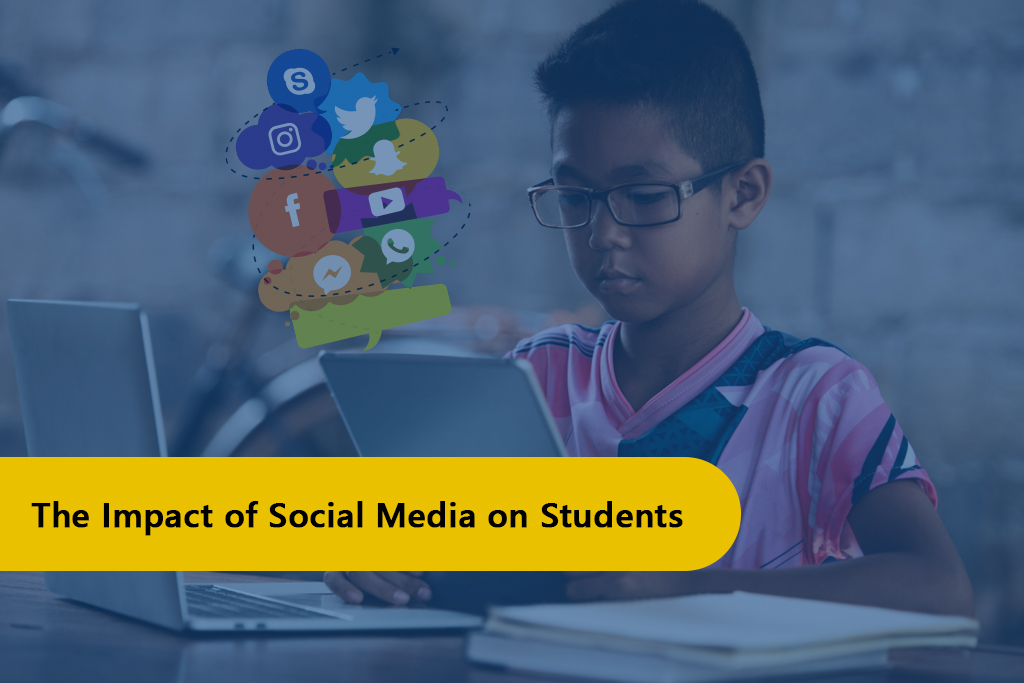




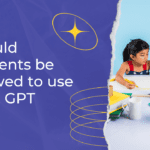
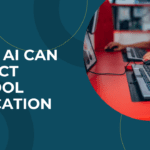
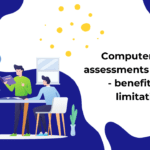
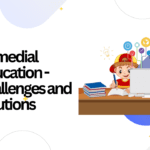
Leave a reply